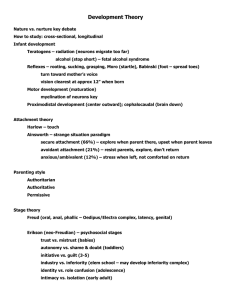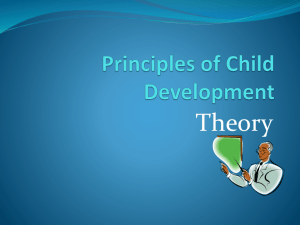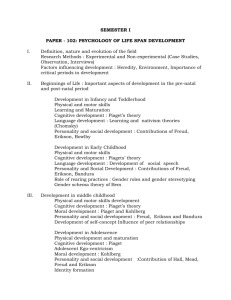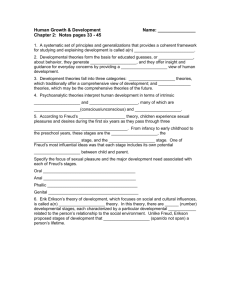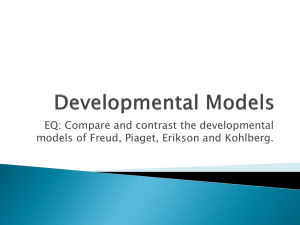Developmental Psychology Theories: Learning Objectives
advertisement
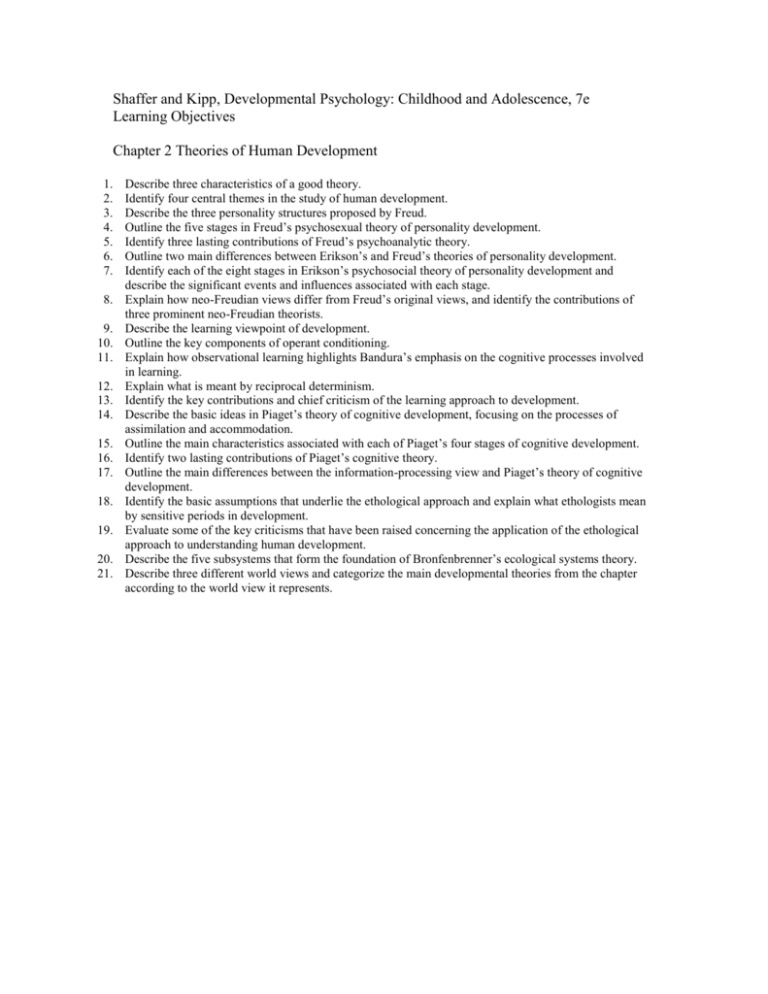
Shaffer and Kipp, Developmental Psychology: Childhood and Adolescence, 7e Learning Objectives Chapter 2 Theories of Human Development 1. 2. 3. 4. 5. 6. 7. 8. 9. 10. 11. 12. 13. 14. 15. 16. 17. 18. 19. 20. 21. Describe three characteristics of a good theory. Identify four central themes in the study of human development. Describe the three personality structures proposed by Freud. Outline the five stages in Freud’s psychosexual theory of personality development. Identify three lasting contributions of Freud’s psychoanalytic theory. Outline two main differences between Erikson’s and Freud’s theories of personality development. Identify each of the eight stages in Erikson’s psychosocial theory of personality development and describe the significant events and influences associated with each stage. Explain how neo-Freudian views differ from Freud’s original views, and identify the contributions of three prominent neo-Freudian theorists. Describe the learning viewpoint of development. Outline the key components of operant conditioning. Explain how observational learning highlights Bandura’s emphasis on the cognitive processes involved in learning. Explain what is meant by reciprocal determinism. Identify the key contributions and chief criticism of the learning approach to development. Describe the basic ideas in Piaget’s theory of cognitive development, focusing on the processes of assimilation and accommodation. Outline the main characteristics associated with each of Piaget’s four stages of cognitive development. Identify two lasting contributions of Piaget’s cognitive theory. Outline the main differences between the information-processing view and Piaget’s theory of cognitive development. Identify the basic assumptions that underlie the ethological approach and explain what ethologists mean by sensitive periods in development. Evaluate some of the key criticisms that have been raised concerning the application of the ethological approach to understanding human development. Describe the five subsystems that form the foundation of Bronfenbrenner’s ecological systems theory. Describe three different world views and categorize the main developmental theories from the chapter according to the world view it represents.

